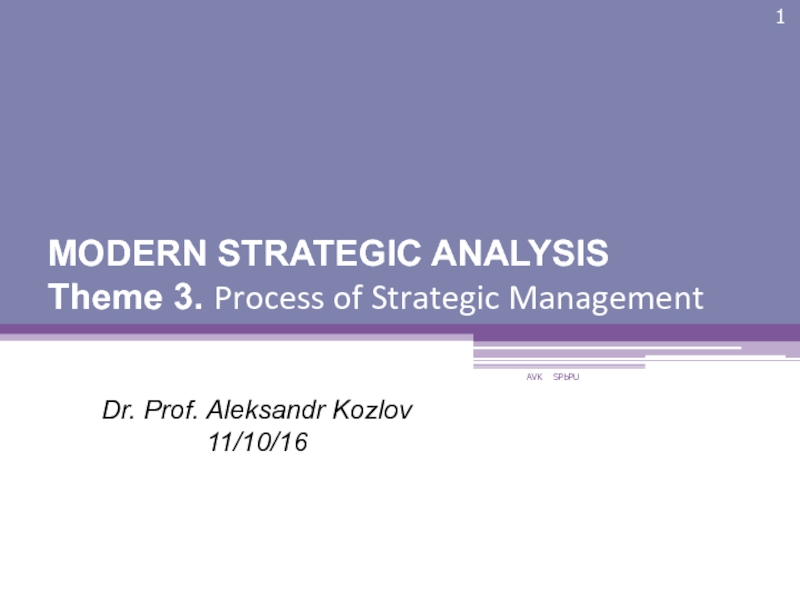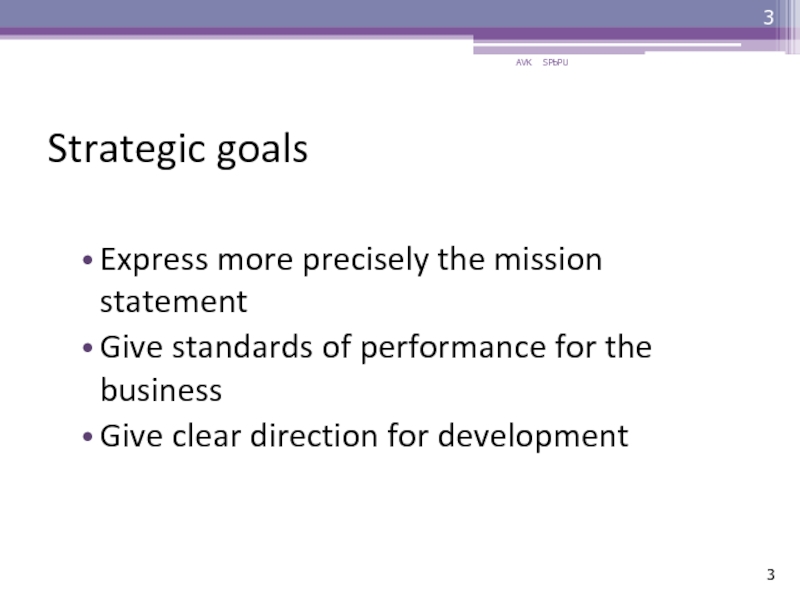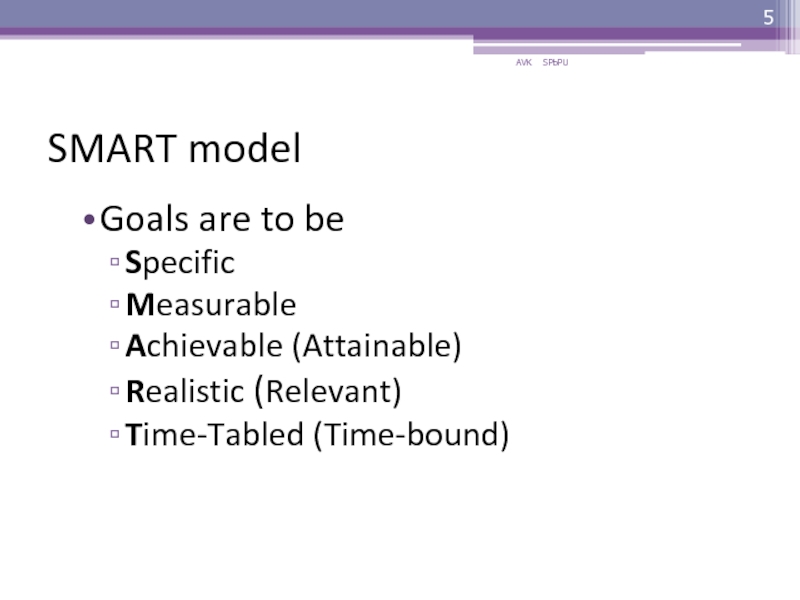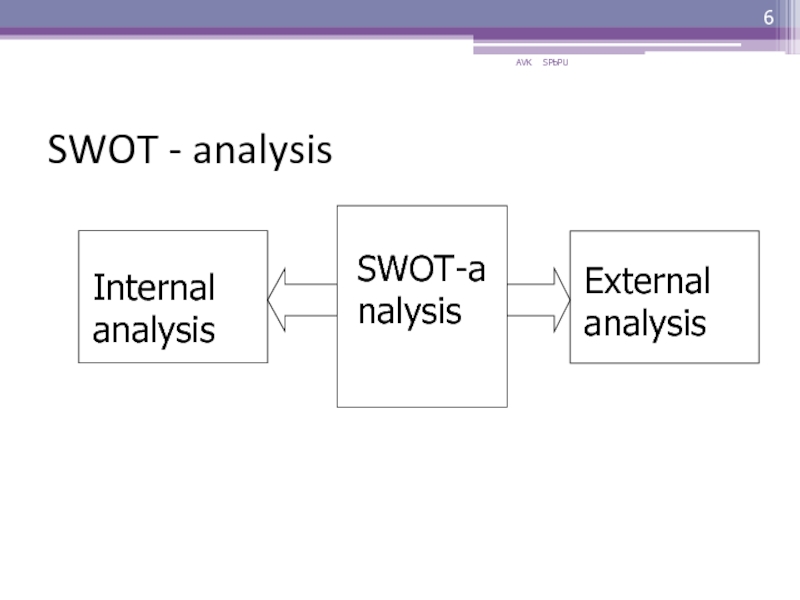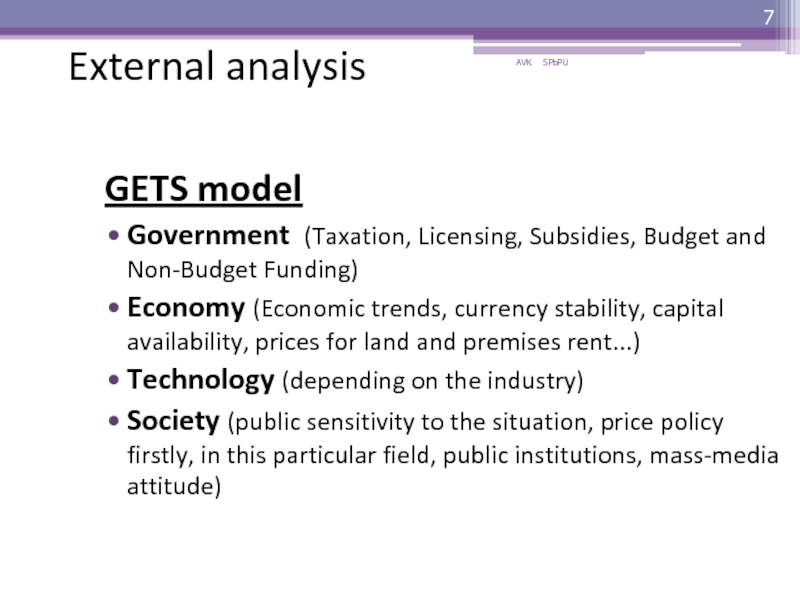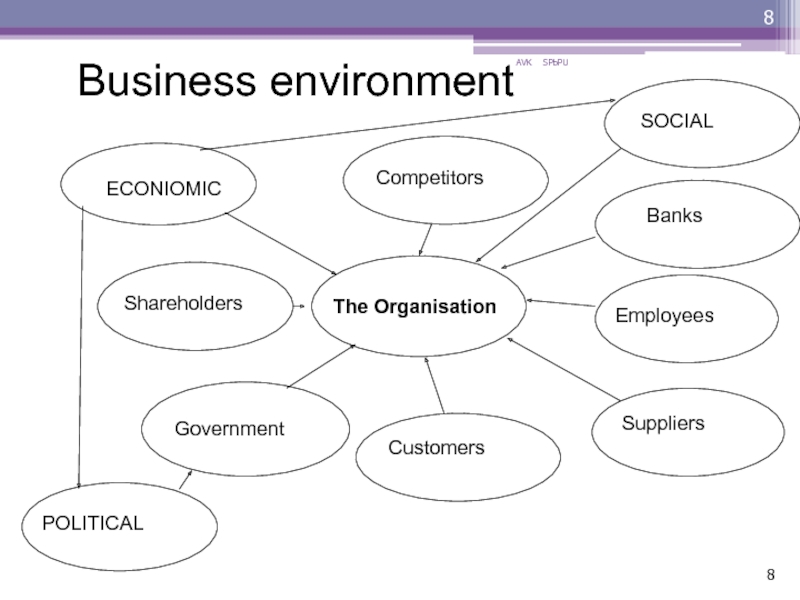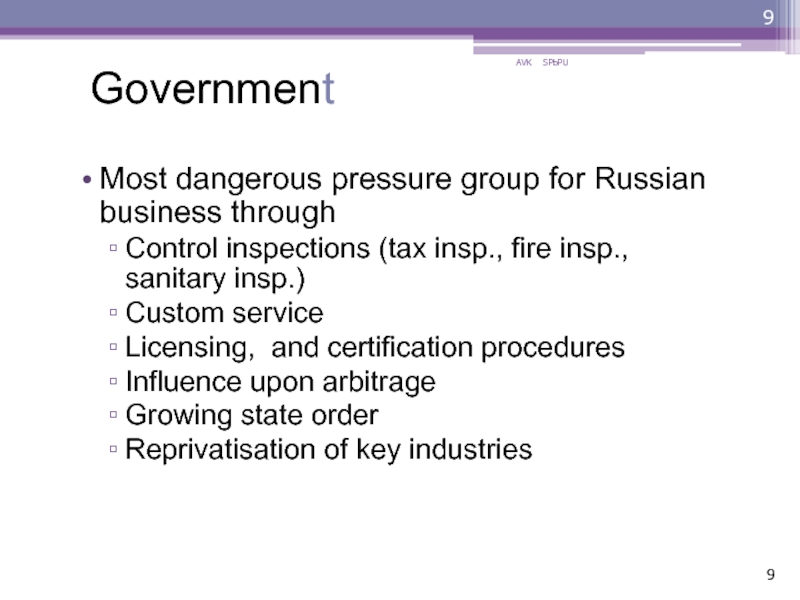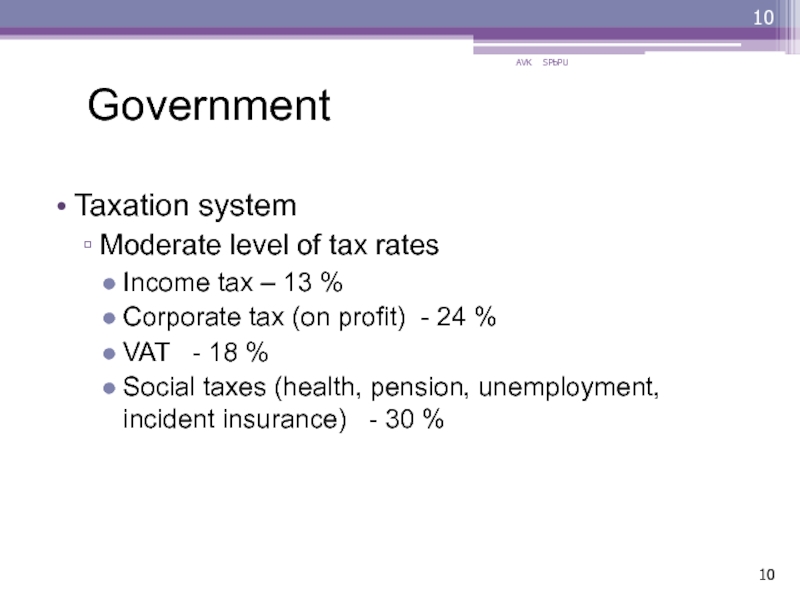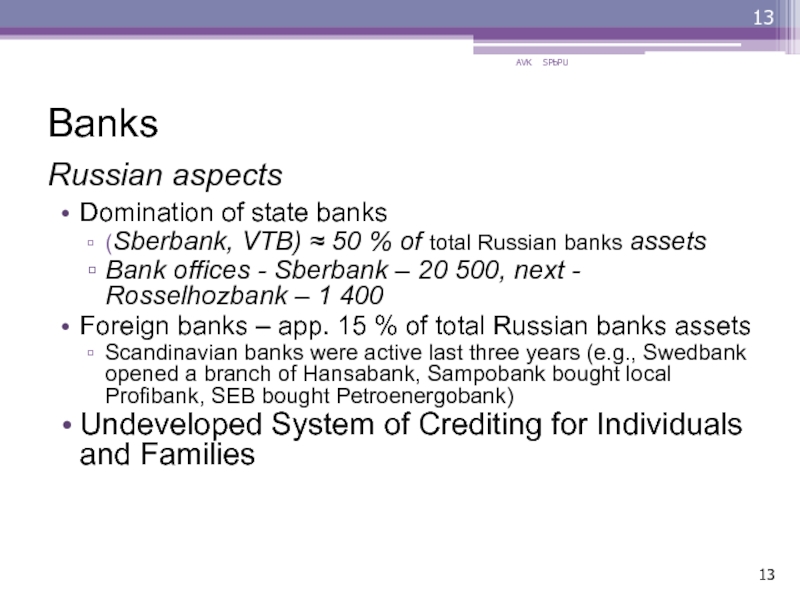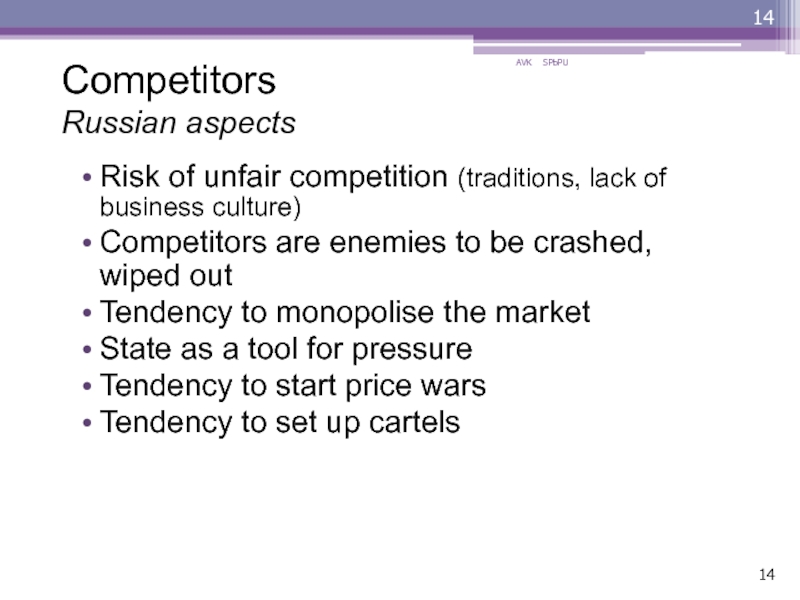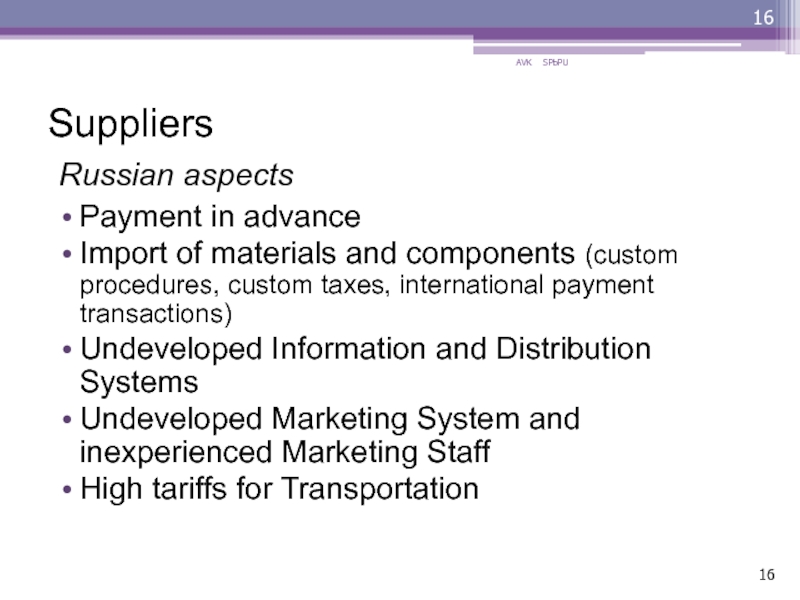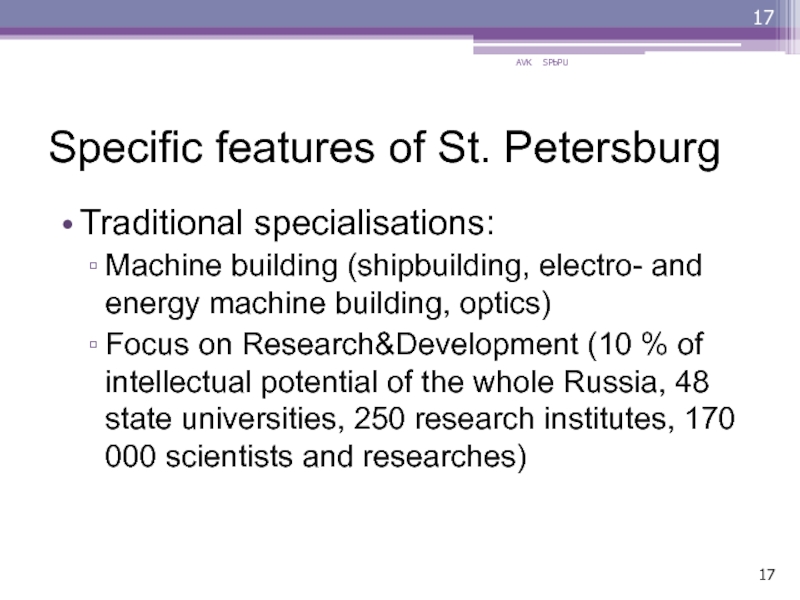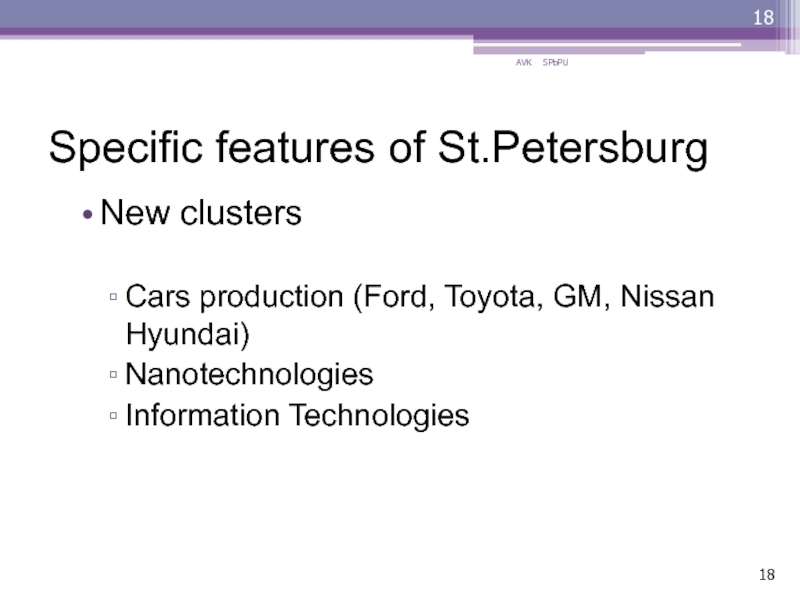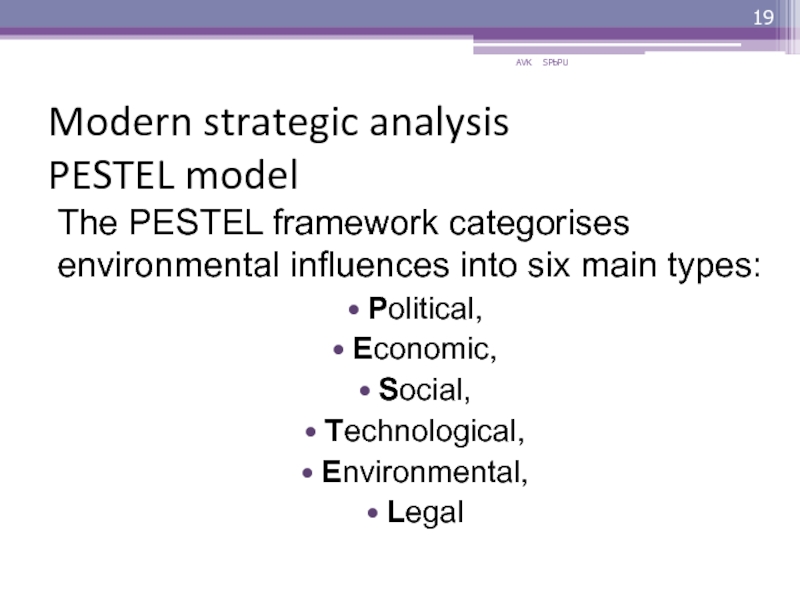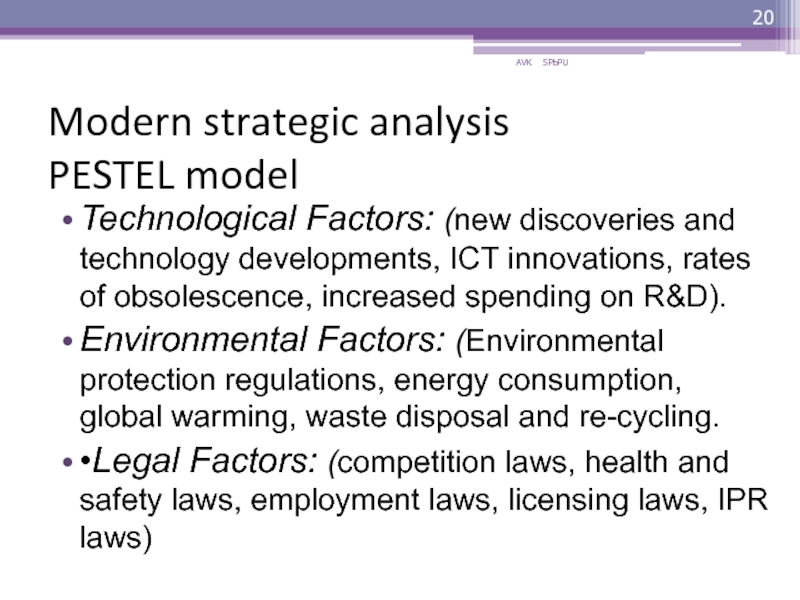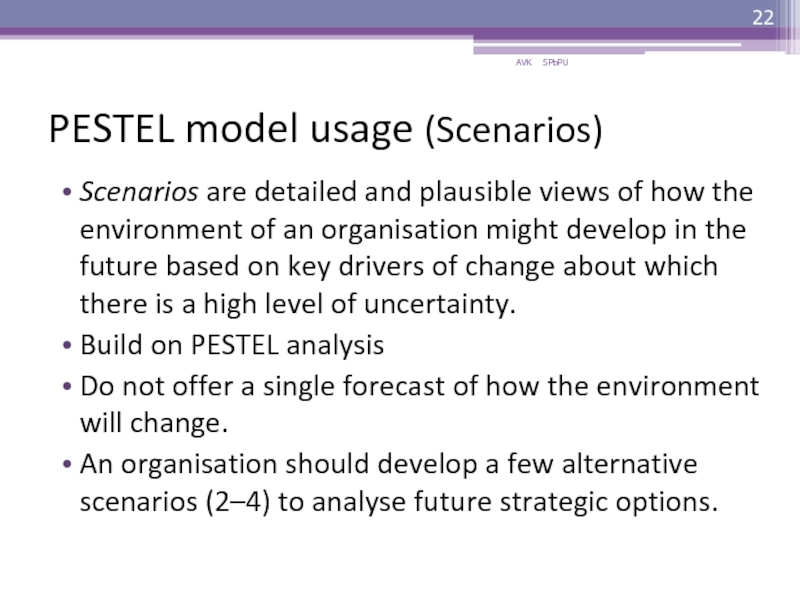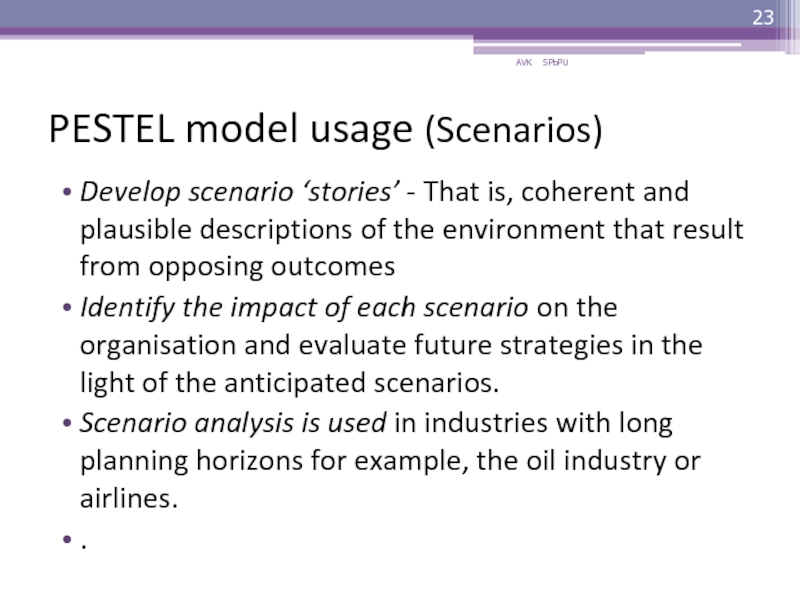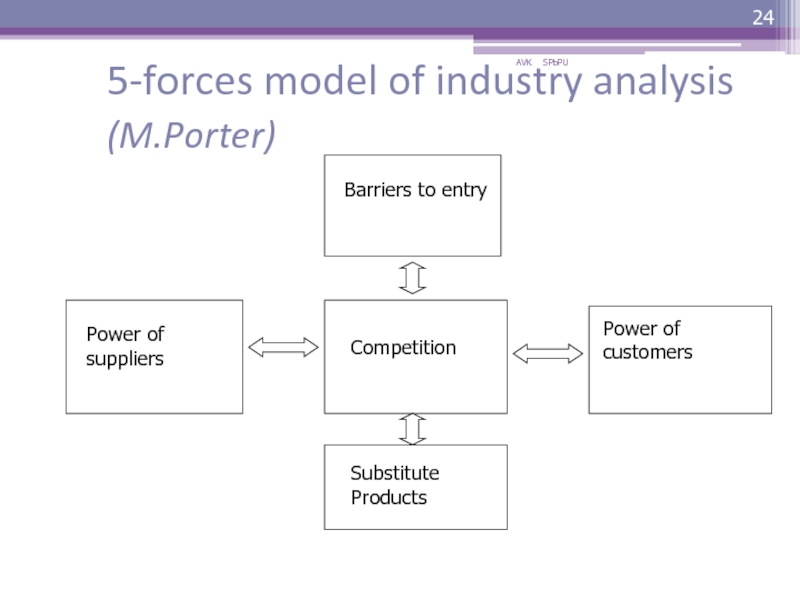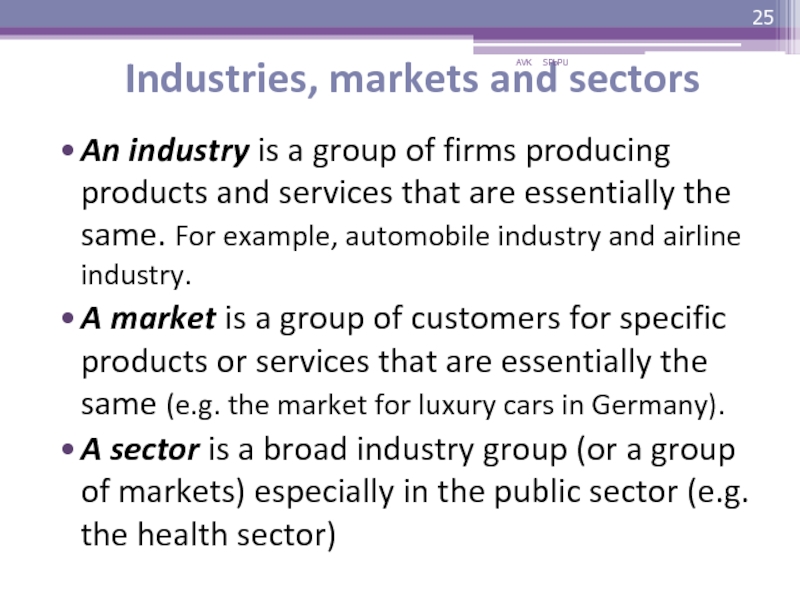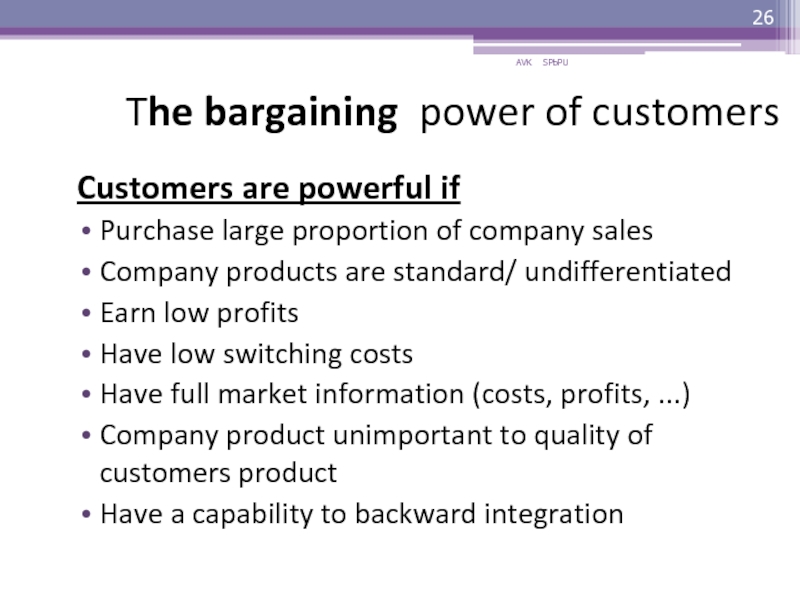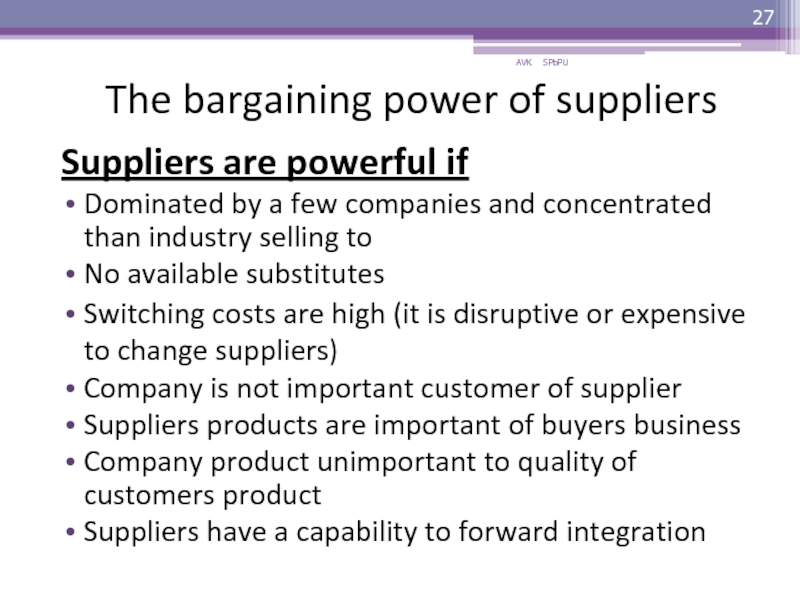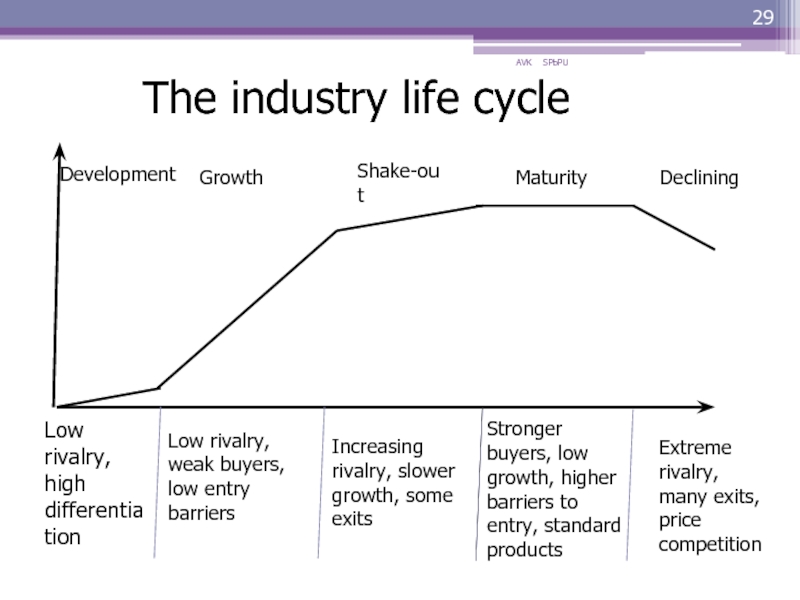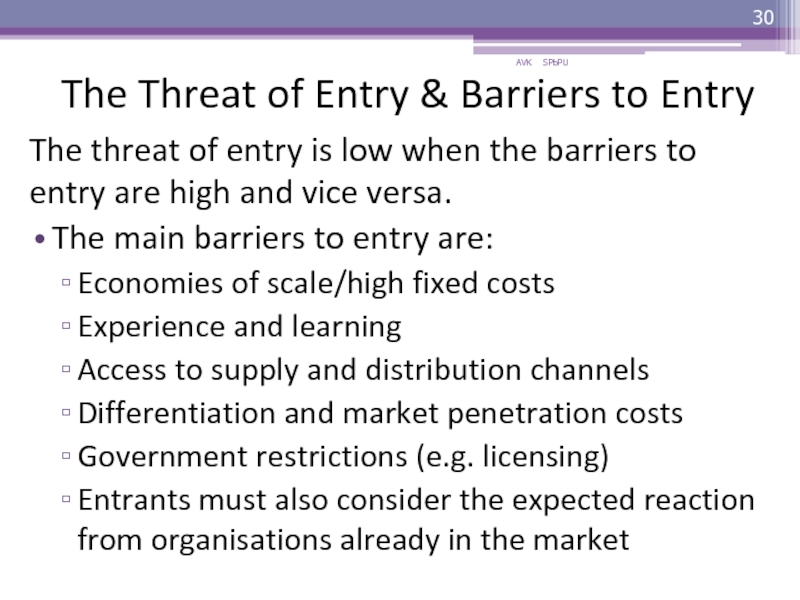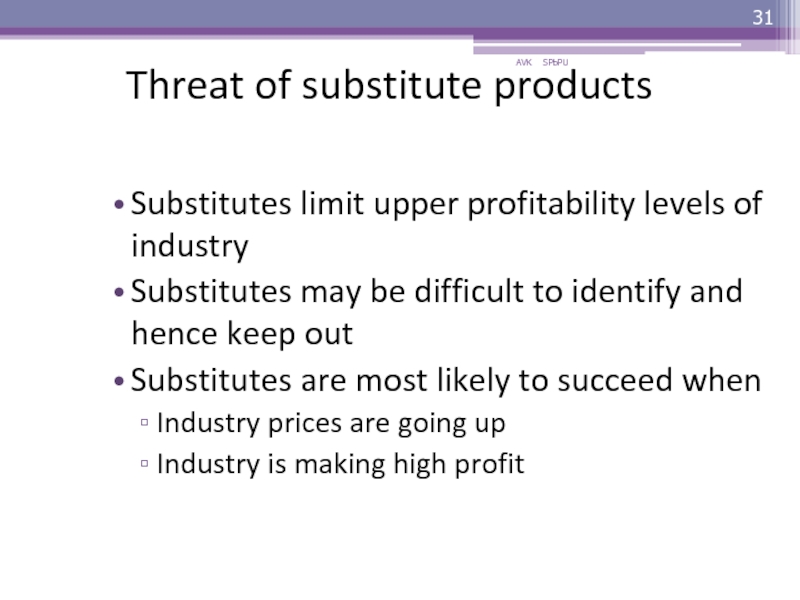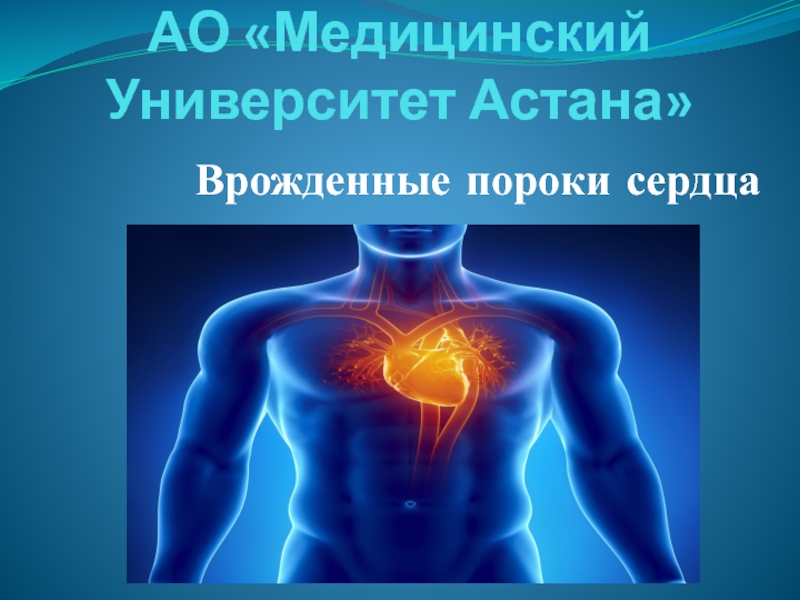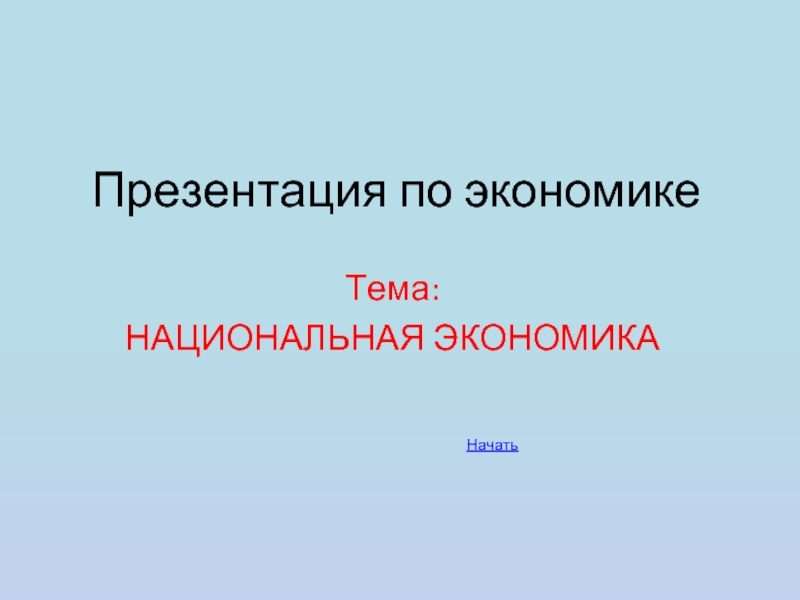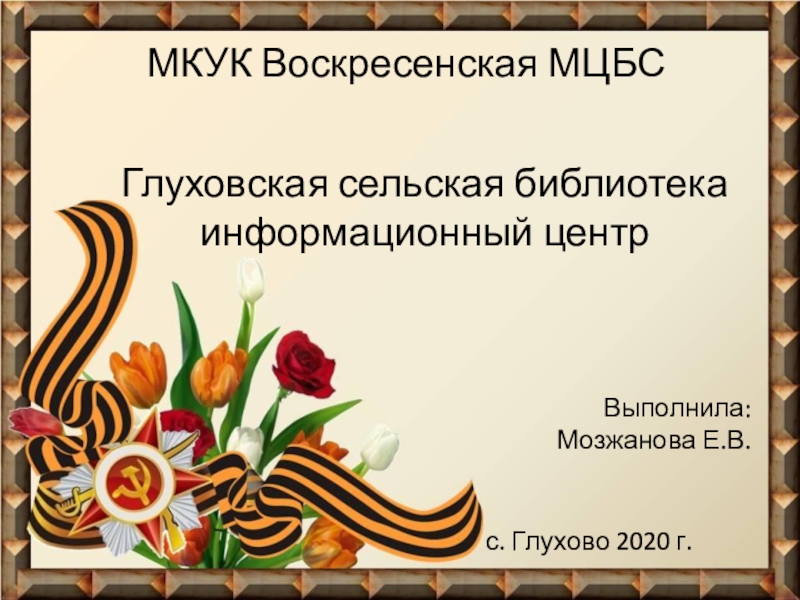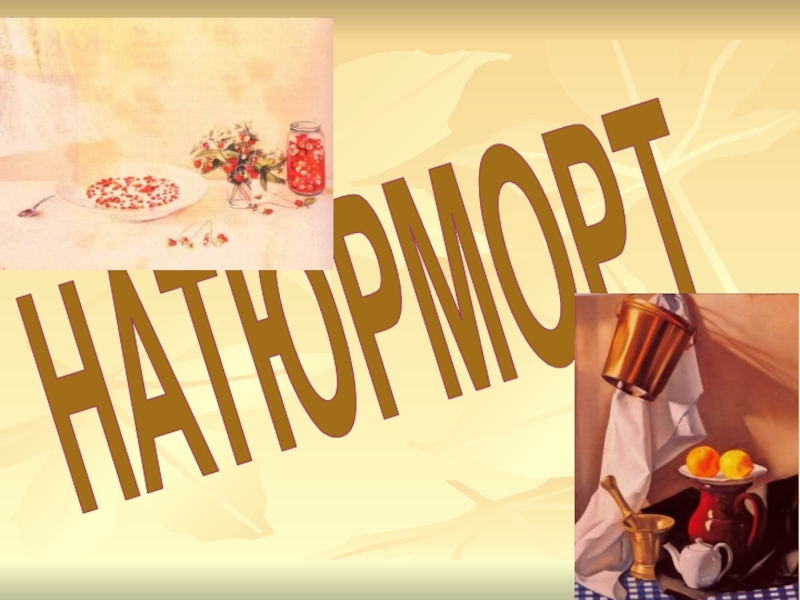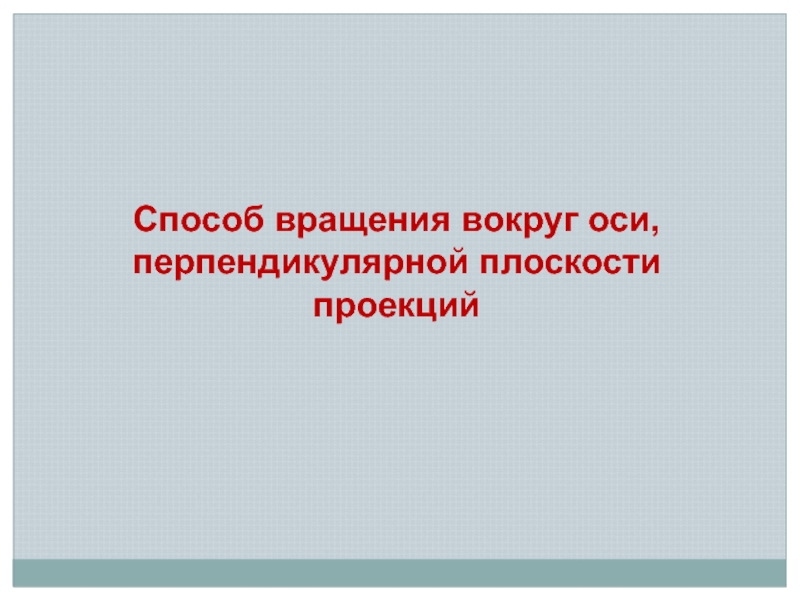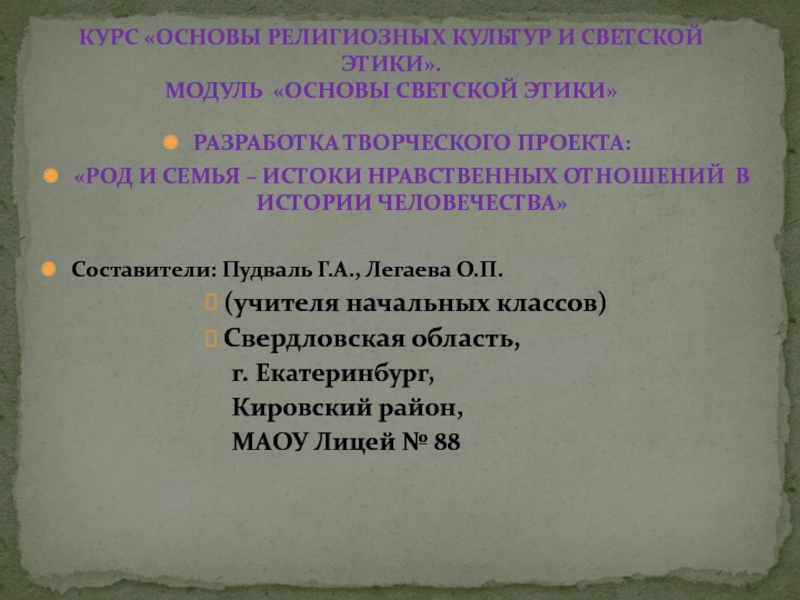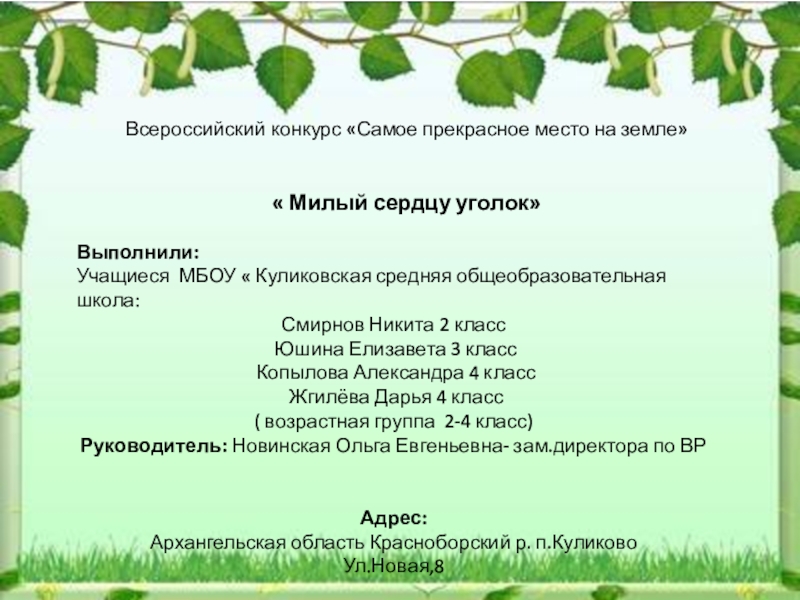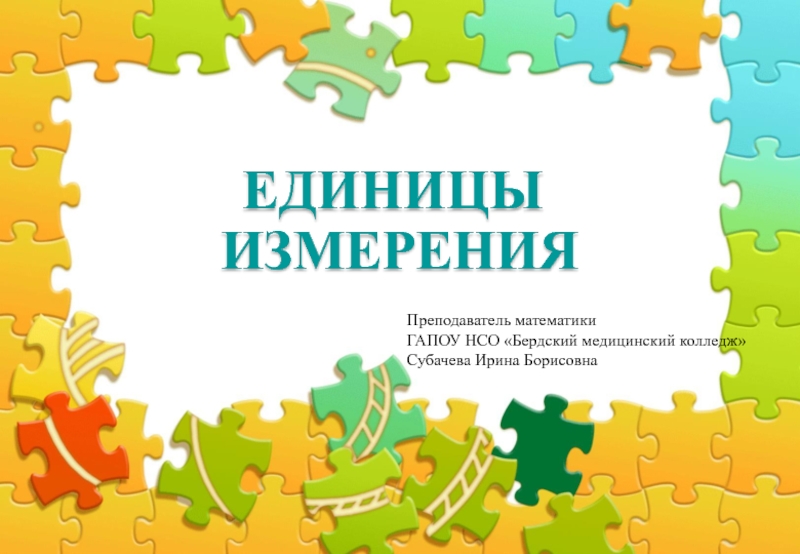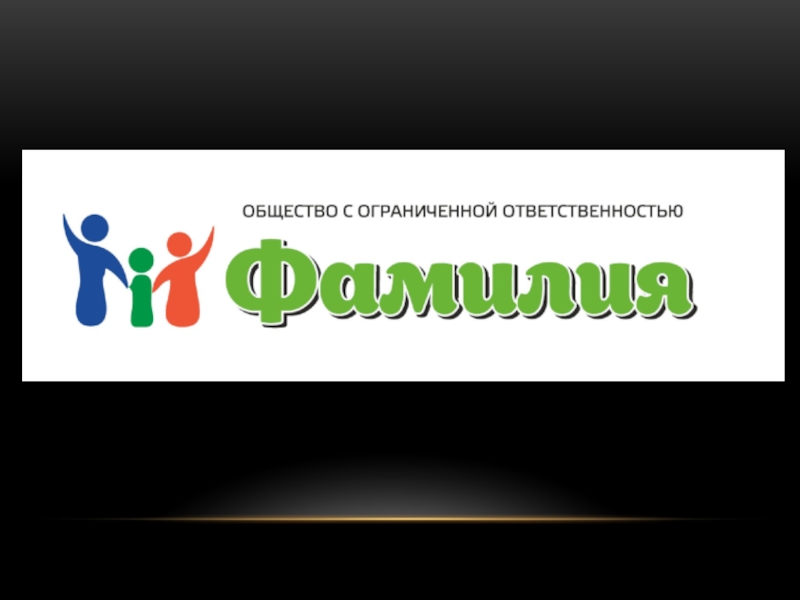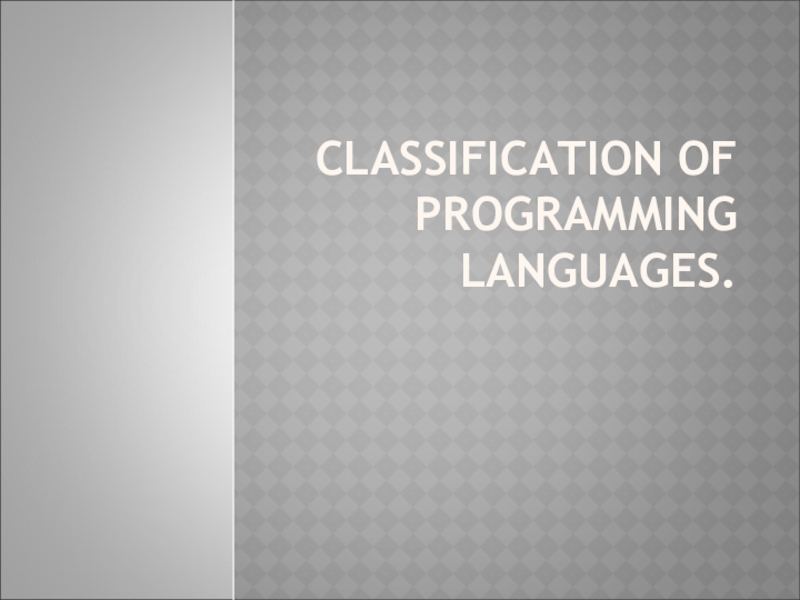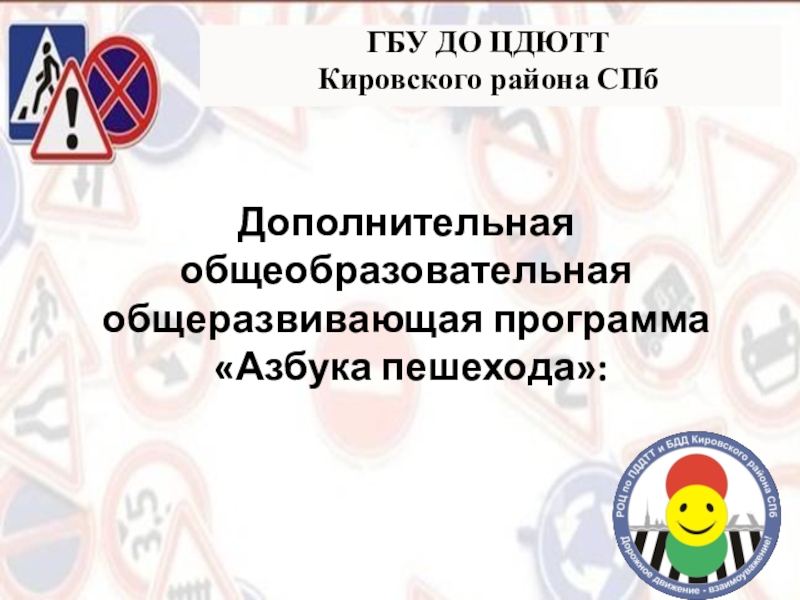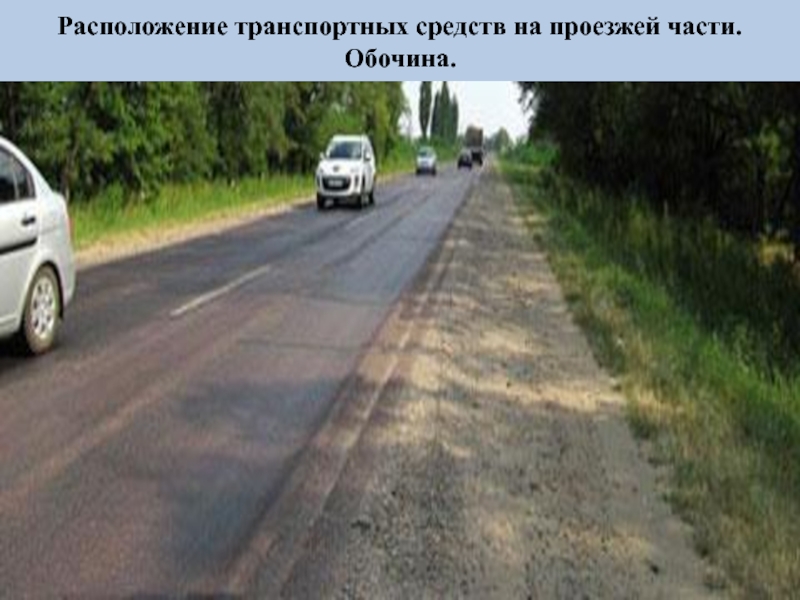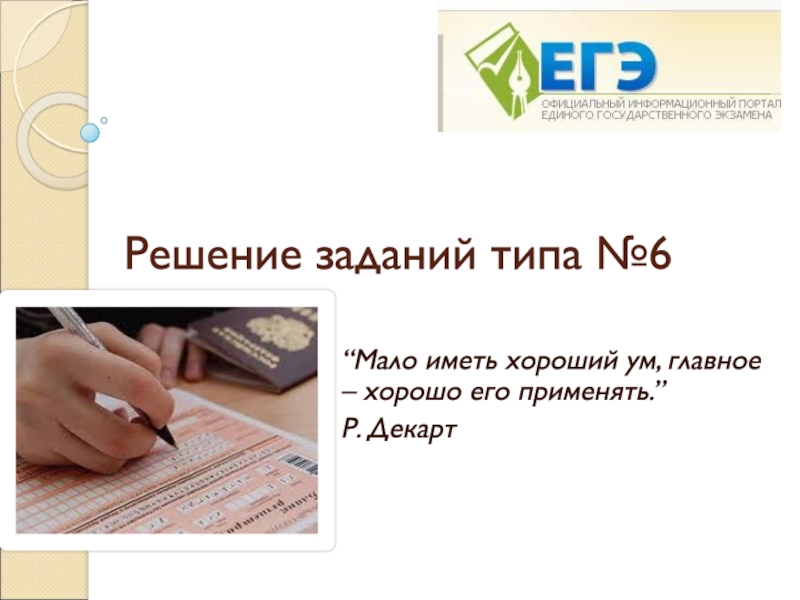Разделы презентаций
- Разное
- Английский язык
- Астрономия
- Алгебра
- Биология
- География
- Геометрия
- Детские презентации
- Информатика
- История
- Литература
- Математика
- Медицина
- Менеджмент
- Музыка
- МХК
- Немецкий язык
- ОБЖ
- Обществознание
- Окружающий мир
- Педагогика
- Русский язык
- Технология
- Физика
- Философия
- Химия
- Шаблоны, картинки для презентаций
- Экология
- Экономика
- Юриспруденция
MODERN STRATEGIC ANALYSIS Theme 3. Process of Strategic Management
Содержание
- 1. MODERN STRATEGIC ANALYSIS Theme 3. Process of Strategic Management
- 2. Process of strategic management Mission Strategic goalsSWOT-analysisAlternative strategiesStrategy choiceStrategy implementationAVK SPbPU
- 3. Strategic goalsExpress more precisely the mission statementGive
- 4. Strategic goals classificationStrategic goalsShort-termLong-TermManyFewOneEqualUnequal (with priorities)QuantitaiveQualitativeFinancialMarketingSocialManufacturingAVK SPbPU
- 5. SMART model Goals are to be Specific MeasurableAchievable (Attainable)Realistic (Relevant) Time-Tabled (Time-bound)AVK SPbPU
- 6. SWOT - analysisSWOT-analysisInternal analysisExternal analysisAVK SPbPU
- 7. External analysisGETS modelGovernment (Taxation, Licensing, Subsidies, Budget
- 8. Business environmentThe OrganisationCompetitorsCustomersGovernmentEmployeesSuppliersBanksECONIOMICSOCIALPOLITICALShareholdersAVK SPbPU
- 9. GovernmentMost dangerous pressure group for Russian business
- 10. GovernmentTaxation systemModerate level of tax ratesIncome tax
- 11. Banks Russian aspectsSmall size (too many banks)
- 12. Banks Russian aspects Assets of the biggest
- 13. Banks Russian aspects Domination of state banks
- 14. Competitors Russian aspectsRisk of unfair competition (traditions,
- 15. Customers Russian aspectsLow payment ability (lack
- 16. Suppliers Russian aspectsPayment in advance Import
- 17. Specific features of St. Petersburg Traditional specialisations:Machine
- 18. Specific features of St.Petersburg New clustersCars production (Ford, Toyota, GM, Nissan Hyundai)NanotechnologiesInformation TechnologiesAVK SPbPU
- 19. Modern strategic analysis PESTEL modelThe PESTEL
- 20. Modern strategic analysis PESTEL modelTechnological Factors:
- 21. PESTEL model usageApply selectively –identify specific factors
- 22. PESTEL model usage (Scenarios)Scenarios are detailed and
- 23. PESTEL model usage (Scenarios)Develop scenario ‘stories’ -
- 24. 5-forces model of industry analysis (M.Porter) CompetitionPower of suppliersPower of customersBarriers to entrySubstitute ProductsAVK SPbPU
- 25. Industries, markets and sectors An industry is
- 26. The bargaining power of customersCustomers are
- 27. The bargaining power of suppliersSuppliers are powerful
- 28. The extent of rivalry between competitorsMany competitors
- 29. The industry life cycle DevelopmentGrowthShake-outMaturityDecliningLow rivalry, high
- 30. The Threat of Entry & Barriers to
- 31. Threat of substitute productsSubstitutes limit upper profitability
- 32. Скачать презентанцию
Слайды и текст этой презентации
Слайд 1MODERN STRATEGIC ANALYSIS
Theme 3. Process of Strategic Management
Dr.
Prof. Aleksandr Kozlov
Слайд 2Process of strategic management
Mission
Strategic goals
SWOT-analysis
Alternative strategies
Strategy
choice
Strategy implementation
AVK SPbPU
Слайд 3Strategic goals
Express more precisely the mission statement
Give standards of performance
for the business
Give clear direction for development
AVK SPbPU
Слайд 4Strategic goals classification
Strategic goals
Short-term
Long-Term
Many
Few
One
Equal
Unequal (with priorities)
Quantitaive
Qualitative
Financial
Marketing
Social
Manufacturing
AVK SPbPU
Слайд 5SMART model
Goals are to be
Specific
Measurable
Achievable (Attainable)
Realistic (Relevant)
Time-Tabled (Time-bound)
AVK SPbPU
Слайд 7External analysis
GETS model
Government (Taxation, Licensing, Subsidies, Budget and Non-Budget Funding)
Economy
(Economic trends, currency stability, capital availability, prices for land and
premises rent...)Technology (depending on the industry)
Society (public sensitivity to the situation, price policy firstly, in this particular field, public institutions, mass-media attitude)
AVK SPbPU
Слайд 8Business environment
The Organisation
Competitors
Customers
Government
Employees
Suppliers
Banks
ECONIOMIC
SOCIAL
POLITICAL
Shareholders
AVK SPbPU
Слайд 9Government
Most dangerous pressure group for Russian business through
Control inspections (tax
insp., fire insp., sanitary insp.)
Custom service
Licensing, and certification procedures
Influence upon
arbitrage Growing state order
Reprivatisation of key industries
AVK SPbPU
Слайд 10Government
Taxation system
Moderate level of tax rates
Income tax – 13 %
Corporate tax (on profit) - 24 %
VAT - 18
%Social taxes (health, pension, unemployment, incident insurance) - 30 %
AVK SPbPU
Слайд 11Banks
Russian aspects
Small size (too many banks)
before 1998 - app. 4000, now - app. 1000 .
Loans for companies only for guarantee (real estate, goods in stock, equipment, stocks)
Low protection of Information
High Interest Rate (20-25 % in Rubles, 8-12 % in USD)
Risk of Bank Bankruptcy (Crisis of year 1998, troubles of summer 2004, crisis of the 2008-09 political situation of the year 2014/16 )
State guarantee for deposits of individuals
App. 20000 USD
Preferences for Quick Money in giving loans (not for industrial companies, mostly trade, currency exchange, stocks)
AVK SPbPU
Слайд 12Banks
Russian aspects
Assets of the biggest Russian Banks (01/01/2015), bln
USD
Sberbank – 366,0 (477,0 in 2014, 313,7 in 2011)
VTB– 137,1
(160,0 in 2014, 96,8 in 2011)Gasprombank – 77,4 (104,8 in 2014, 64,3 in 2011)
The # 1 in 2014 in the World
Industrial and Commercial Bank of China 3124,0
Total assets of Russian banking system –
less. 1000 bln USD
Assets of ING Group, (Netherlands), 26th place in the world bank ranking – 1082,0 bln USD
AVK SPbPU
Слайд 13Banks
Russian aspects
Domination of state banks
(Sberbank, VTB) ≈ 50
% of total Russian banks assets
Bank offices - Sberbank –
20 500, next - Rosselhozbank – 1 400Foreign banks – app. 15 % of total Russian banks assets
Scandinavian banks were active last three years (e.g., Swedbank opened a branch of Hansabank, Sampobank bought local Profibank, SEB bought Petroenergobank)
Undeveloped System of Crediting for Individuals and Families
AVK SPbPU
Слайд 14Competitors
Russian aspects
Risk of unfair competition (traditions, lack of business culture)
Competitors
are enemies to be crashed, wiped out
Tendency to monopolise the
marketState as a tool for pressure
Tendency to start price wars
Tendency to set up cartels
AVK SPbPU
Слайд 15Customers
Russian aspects
Low payment ability (lack of working capital)
Differentiation in
Income through the Country Monthly income. (2016)
Russia app. 35000 Rbl
Moscow app. 70000 Rbl
St. Petersburg app. 45000 Rbl
Altaiskii krai app. 19000
Dagestan app. 18000
Kalmykia App. 19000
Undeveloped Distribution Channels
Disbelief (skeptical attitude) in Advertising and trust to rumors
AVK SPbPU
Слайд 16Suppliers
Russian aspects
Payment in advance
Import of materials and components
(custom procedures, custom taxes, international payment transactions)
Undeveloped Information and Distribution
SystemsUndeveloped Marketing System and inexperienced Marketing Staff
High tariffs for Transportation
AVK SPbPU
Слайд 17Specific features of St. Petersburg
Traditional specialisations:
Machine building (shipbuilding, electro-
and energy machine building, optics)
Focus on Research&Development (10 % of
intellectual potential of the whole Russia, 48 state universities, 250 research institutes, 170 000 scientists and researches)AVK SPbPU
Слайд 18Specific features of St.Petersburg
New clusters
Cars production (Ford, Toyota, GM,
Nissan Hyundai)
Nanotechnologies
Information Technologies
AVK SPbPU
Слайд 19Modern strategic analysis
PESTEL model
The PESTEL framework categorises environmental influences
into six main types:
Political,
Economic,
Social,
Technological,
Environmental,
Legal
AVK
SPbPUСлайд 20Modern strategic analysis
PESTEL model
Technological Factors: (new discoveries and technology
developments, ICT innovations, rates of obsolescence, increased spending on R&D).
Environmental Factors: (Environmental protection regulations, energy consumption, global warming, waste disposal and re-cycling.
•Legal Factors: (competition laws, health and safety laws, employment laws, licensing laws, IPR laws)
AVK SPbPU
Слайд 21PESTEL model usage
Apply selectively –identify specific factors which impact on
the industry, market and organisation in question.
Identify factors which
are important currently but also consider which will become more important in the next few years. •Use data to support the points and analyse trends using up to date information
•Identify opportunities and threats – the main point of the analysis!
AVK SPbPU
Слайд 22PESTEL model usage (Scenarios)
Scenarios are detailed and plausible views of
how the environment of an organisation might develop in the
future based on key drivers of change about which there is a high level of uncertainty.Build on PESTEL analysis
Do not offer a single forecast of how the environment will change.
An organisation should develop a few alternative scenarios (2–4) to analyse future strategic options.
AVK SPbPU
Слайд 23PESTEL model usage (Scenarios)
Develop scenario ‘stories’ - That is, coherent
and plausible descriptions of the environment that result from opposing
outcomesIdentify the impact of each scenario on the organisation and evaluate future strategies in the light of the anticipated scenarios.
Scenario analysis is used in industries with long planning horizons for example, the oil industry or airlines.
.
AVK SPbPU
Слайд 245-forces model of industry analysis (M.Porter)
Competition
Power of suppliers
Power of
customers
Barriers to entry
Substitute Products
AVK SPbPU
Слайд 25Industries, markets and sectors
An industry is a group of
firms producing products and services that are essentially the same.
For example, automobile industry and airline industry.A market is a group of customers for specific products or services that are essentially the same (e.g. the market for luxury cars in Germany).
A sector is a broad industry group (or a group of markets) especially in the public sector (e.g. the health sector)
AVK SPbPU
Слайд 26
The bargaining power of customers
Customers are powerful if
Purchase large proportion
of company sales
Company products are standard/ undifferentiated
Earn low profits
Have low
switching costs Have full market information (costs, profits, ...)
Company product unimportant to quality of customers product
Have a capability to backward integration
AVK SPbPU
Слайд 27The bargaining power of suppliers
Suppliers are powerful if
Dominated by a
few companies and concentrated than industry selling to
No available substitutes
Switching
costs are high (it is disruptive or expensive to change suppliers)Company is not important customer of supplier
Suppliers products are important of buyers business
Company product unimportant to quality of customers product
Suppliers have a capability to forward integration
AVK SPbPU
Слайд 28The extent of rivalry between competitors
Many competitors are of roughly
equal size
Competitors are aggressive in seeking leadership
Slow growth
(The market is mature or declining)High fixed costs
Weak differentiation
High barriers to exit
AVK SPbPU
Слайд 29The industry life cycle
Development
Growth
Shake-out
Maturity
Declining
Low rivalry, high differentiation
Low rivalry, weak
buyers, low entry barriers
Increasing rivalry, slower growth, some exits
Stronger buyers,
low growth, higher barriers to entry, standard products Extreme rivalry, many exits, price competition
AVK SPbPU
Слайд 30The Threat of Entry & Barriers to Entry
The threat of
entry is low when the barriers to entry are high
and vice versa.The main barriers to entry are:
Economies of scale/high fixed costs
Experience and learning
Access to supply and distribution channels
Differentiation and market penetration costs
Government restrictions (e.g. licensing)
Entrants must also consider the expected reaction from organisations already in the market
AVK SPbPU
Слайд 31Threat of substitute products
Substitutes limit upper profitability levels of industry
Substitutes
may be difficult to identify and hence keep out
Substitutes are
most likely to succeed whenIndustry prices are going up
Industry is making high profit
AVK SPbPU
